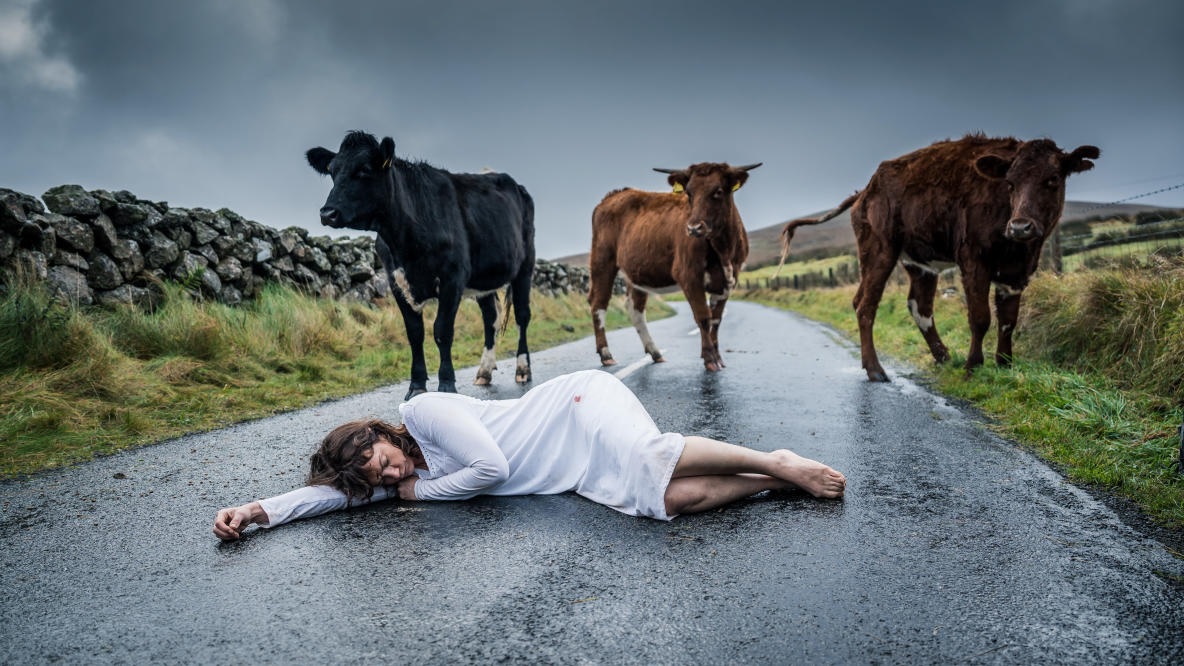“The Woman in the Wall”: A Complex Drama Unfolds
In a captivating blend of historical drama, mystery, and psychological thriller, BBC’s new six-part series, “The Woman in the Wall,” delves into the haunting legacy of Ireland’s Magdalene laundries and the pervasive control exerted by the Catholic Church over women’s lives.
Penned by Joe Murtagh, the series draws from the experiences of those sent to these institutions and the mother and baby homes that often accompanied them, with the endorsement of local priests and families. Set against the backdrop of Ireland, the show navigates the delicate balance of merging genres while shedding light on a dark chapter in history.
The Woman in the Wall review
The narrative of “The Woman in the Wall” takes viewers on multiple journeys. It intertwines a police procedural, pairing a polished urban detective, Colman Akande (played by Daryl McCormack), with a rural counterpart, Sergeant Massey (Simon Delaney), reminiscent of renowned shows like “Broadchurch” and “The Bridge.”
The historical dimension unearths the harrowing reality of church abuses and their lasting impact on survivors. Additionally, the series adds an element of revenge-driven suspense, bordering on horror, amplifying tension and intrigue. You may also read Unraveling Secrets and Twists.
However, the fusion of these genres is a delicate art, and “The Woman in the Wall” occasionally stumbles in its execution. As the protagonist, Lorna, grapples with her fractured psyche, the storyline’s erratic shifts can befuddle rather than reward attentive viewers. Instead of providing a captivating puzzle, the show at times feels disjointed, making it challenging to maintain a firm grasp on the unfolding events.
The exploration of the Magdalene laundries and their historical resonance has already been broached on the silver screen through films like “The Magdalene Sisters” and “Philomena.” “The Woman in the Wall” brings this historical reckoning to television, injecting genre elements to potentially make it more
What is the true story of Ireland’s Magdalene Laundries?
While this approach may resonate with some audiences, others might view the interjection of clichés and the overlay of a murder mystery as a somewhat tasteless imposition. Certain scenes veer into horror territory, with eerie messages on walls and unsettling acts that detract from the gravity of the topic.
Regrettably, the series occasionally falters in its portrayal of small-town Ireland, painting it as a bleak landscape. This depiction neglects to capture the layers of culture and civilization found even in rural areas. A hint of cynicism surfaces as the show stereotypes elderly women as profanity-laden characters and local police as bumbling figures.
This portrayal comes across as overly simplistic and unrepresentative of the richness found in such communities. You should also check Tim McGraw on Country Music’s Triumph, Personal Growth.
Remarkably, “The Woman in the Wall” attempts to draw viewers’ attention to a deeply significant and often obscured part of Ireland’s past. Survivors of these institutions have expressed the desire to see their history acknowledged and integrated into the educational curriculum.
While strides are being made, such as the inclusion of Mother and Baby Homes in core courses, there remains a gap in recognizing the Magdalene Laundries. The series aims to engage younger generations in these critical conversations and challenge the forces that seek to suppress this history.
In sum, “The Woman in the Wall” embarks on a challenging journey to merge genres and illuminate a dark history. While occasionally faltering in its execution and portrayal, the series endeavors to bring a suppressed history to light and spark meaningful conversations about justice and remembrance. Through its multi-faceted storytelling, it strives to empower survivors and honor their voices, with the hope that society will no longer allow these truths to remain hidden.








